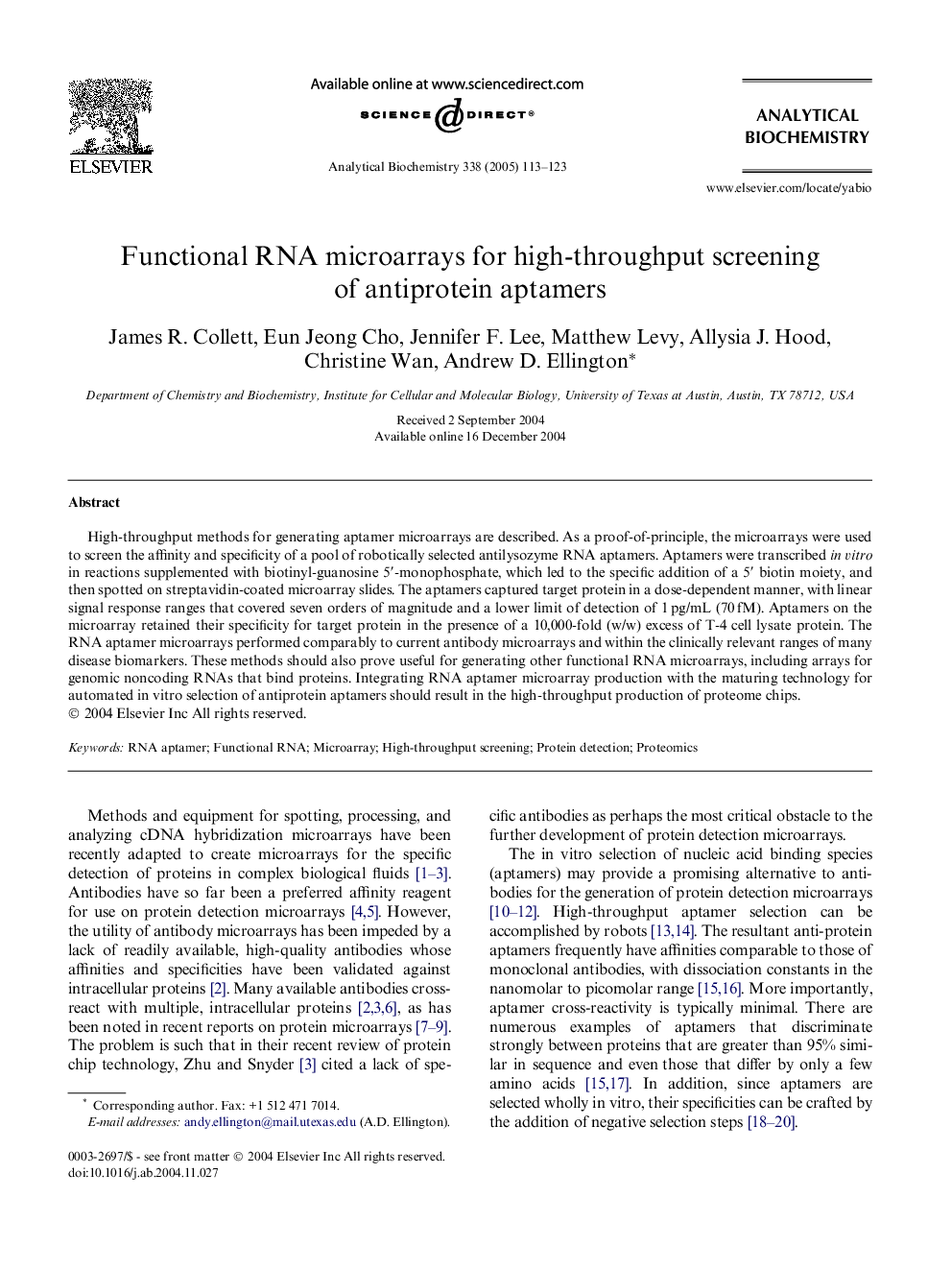| Article ID | Journal | Published Year | Pages | File Type |
|---|---|---|---|---|
| 10534089 | Analytical Biochemistry | 2005 | 11 Pages |
Abstract
High-throughput methods for generating aptamer microarrays are described. As a proof-of-principle, the microarrays were used to screen the affinity and specificity of a pool of robotically selected antilysozyme RNA aptamers. Aptamers were transcribed in vitro in reactions supplemented with biotinyl-guanosine 5â²-monophosphate, which led to the specific addition of a 5â² biotin moiety, and then spotted on streptavidin-coated microarray slides. The aptamers captured target protein in a dose-dependent manner, with linear signal response ranges that covered seven orders of magnitude and a lower limit of detection of 1Â pg/mL (70Â fM). Aptamers on the microarray retained their specificity for target protein in the presence of a 10,000-fold (w/w) excess of T-4 cell lysate protein. The RNA aptamer microarrays performed comparably to current antibody microarrays and within the clinically relevant ranges of many disease biomarkers. These methods should also prove useful for generating other functional RNA microarrays, including arrays for genomic noncoding RNAs that bind proteins. Integrating RNA aptamer microarray production with the maturing technology for automated in vitro selection of antiprotein aptamers should result in the high-throughput production of proteome chips.
Related Topics
Physical Sciences and Engineering
Chemistry
Analytical Chemistry
Authors
James R. Collett, Eun Jeong Cho, Jennifer F. Lee, Matthew Levy, Allysia J. Hood, Christine Wan, Andrew D. Ellington,
